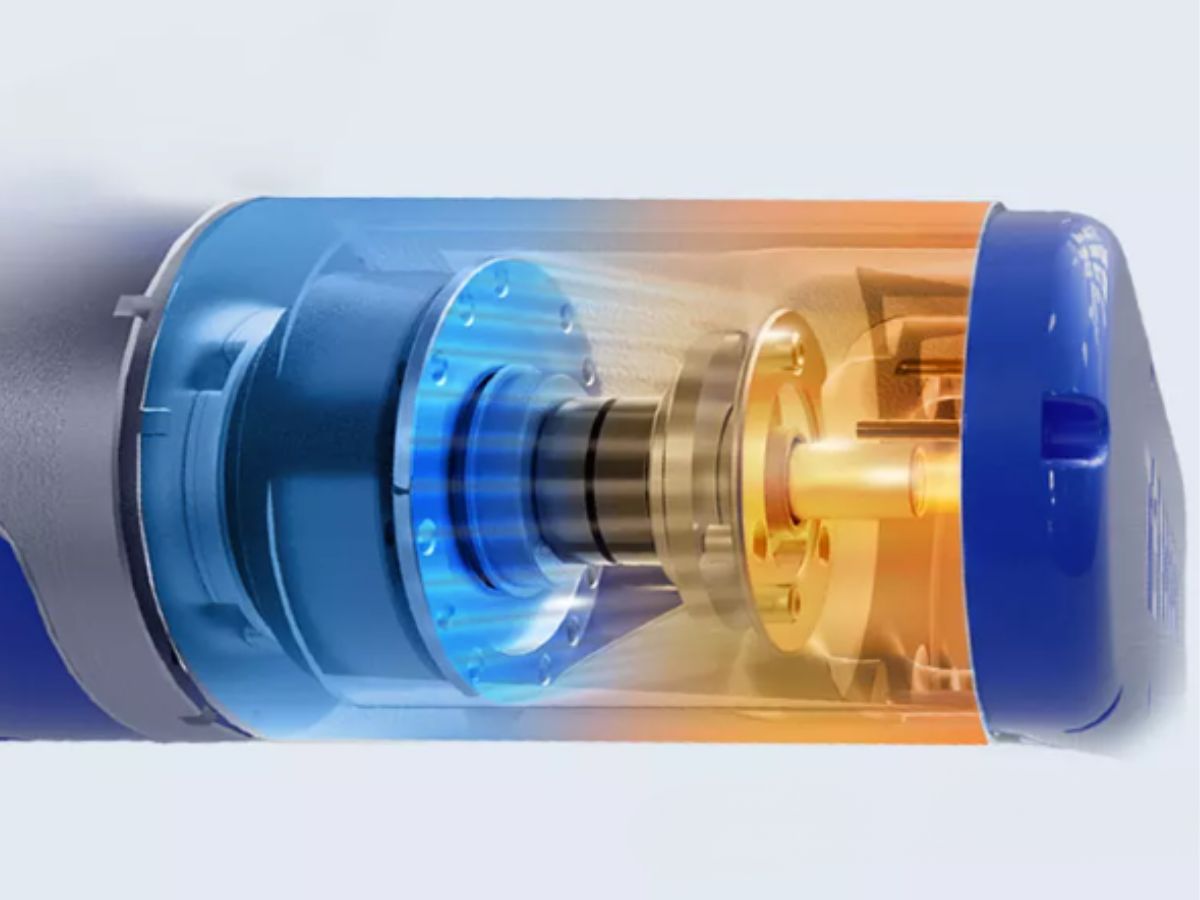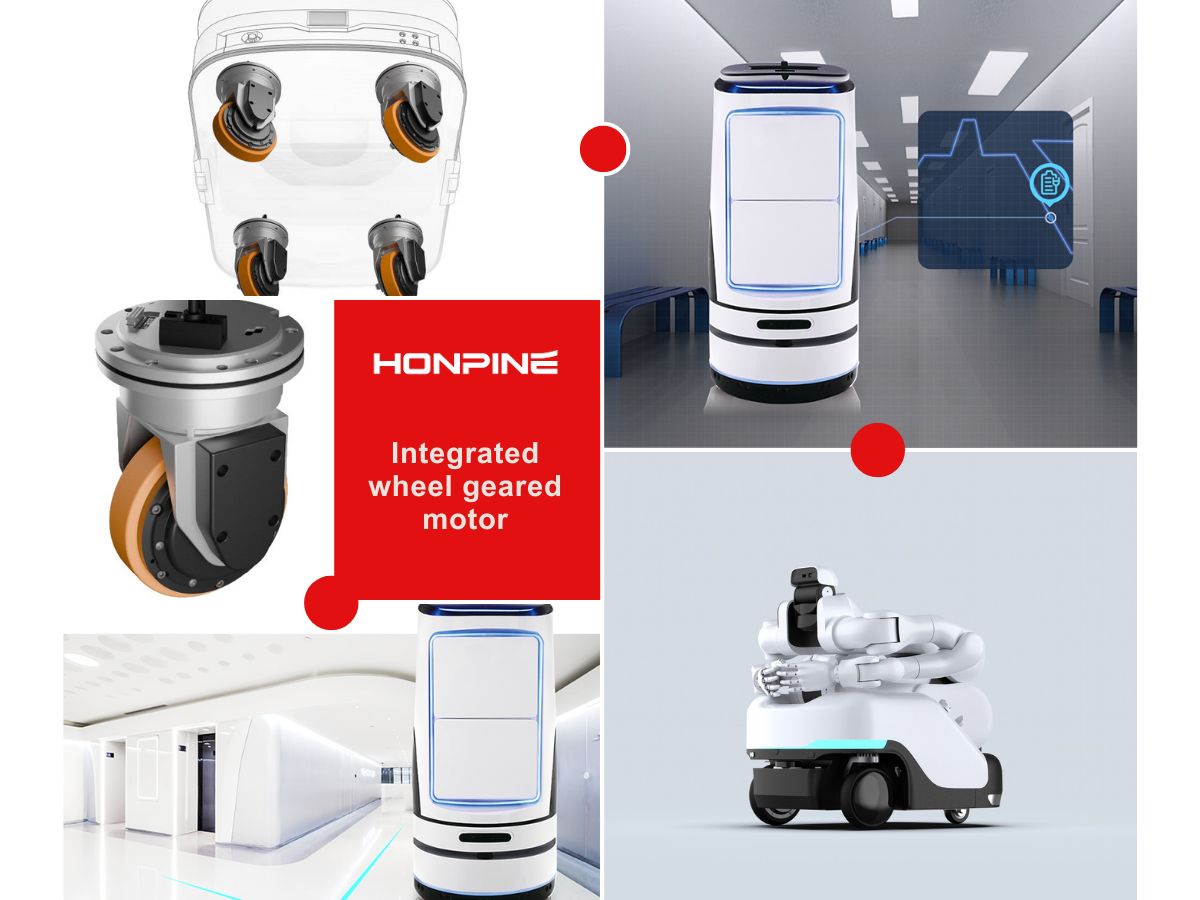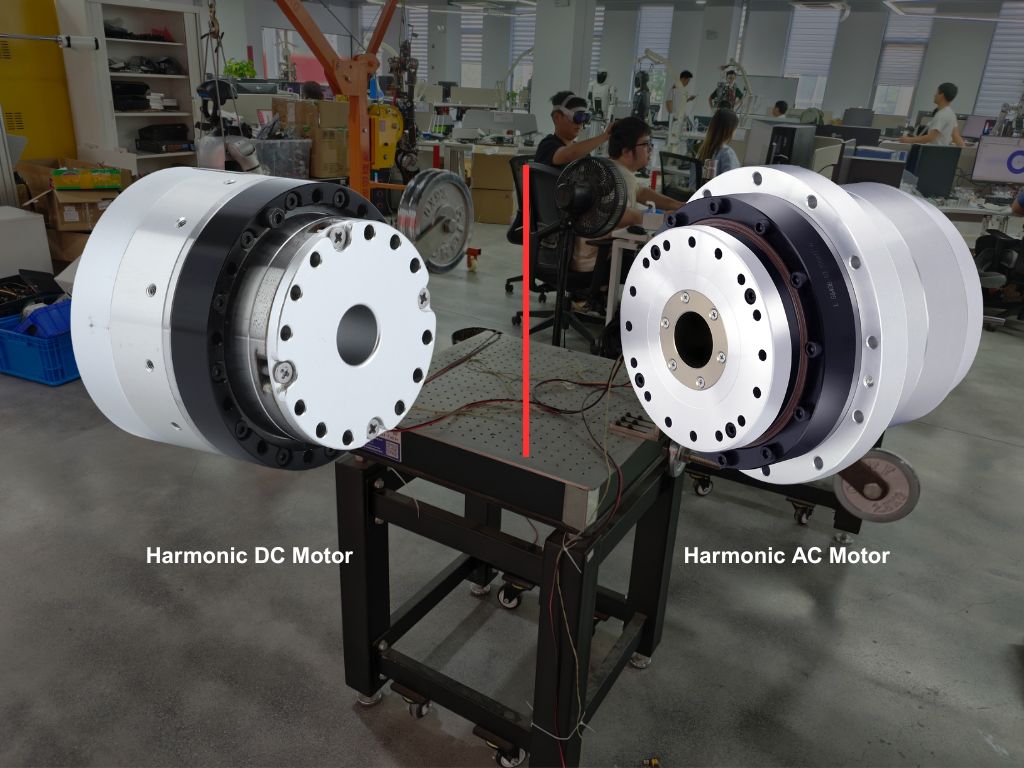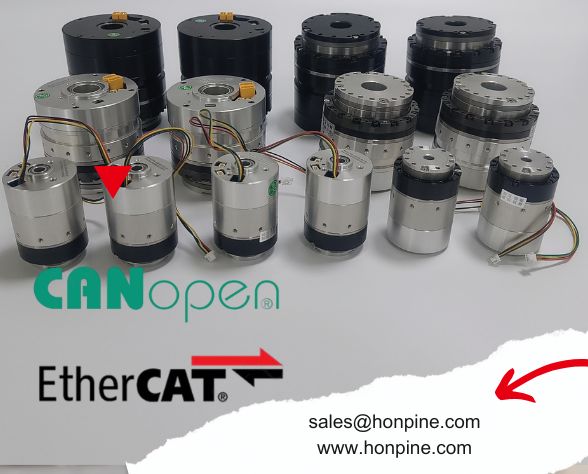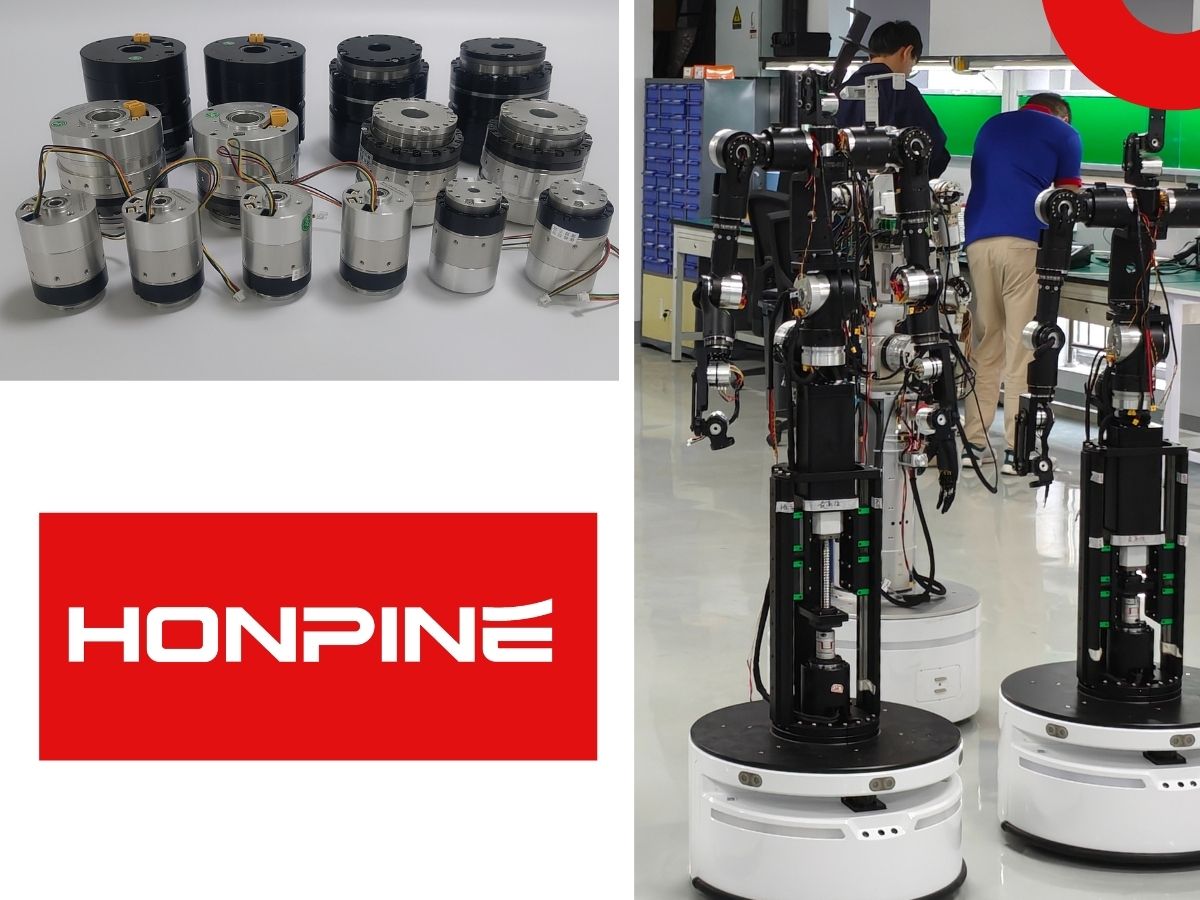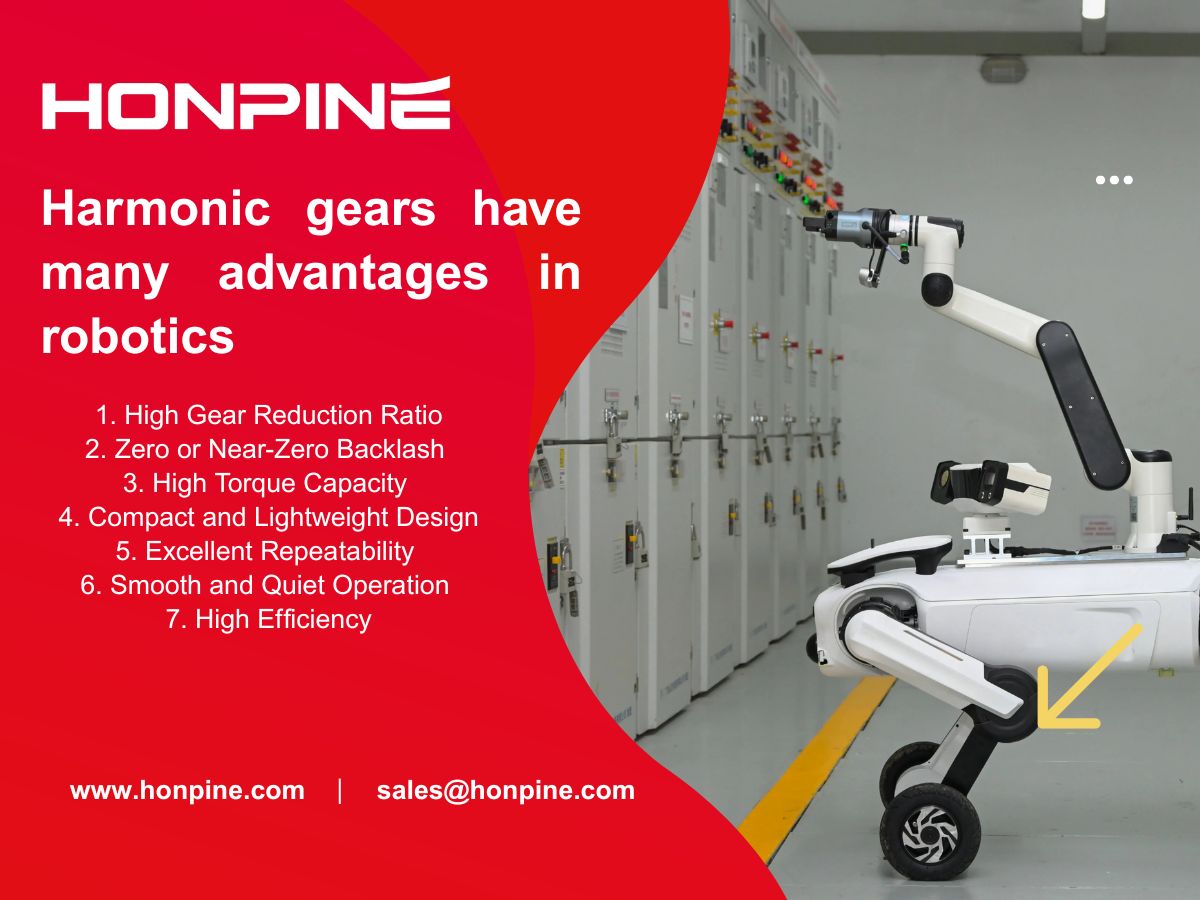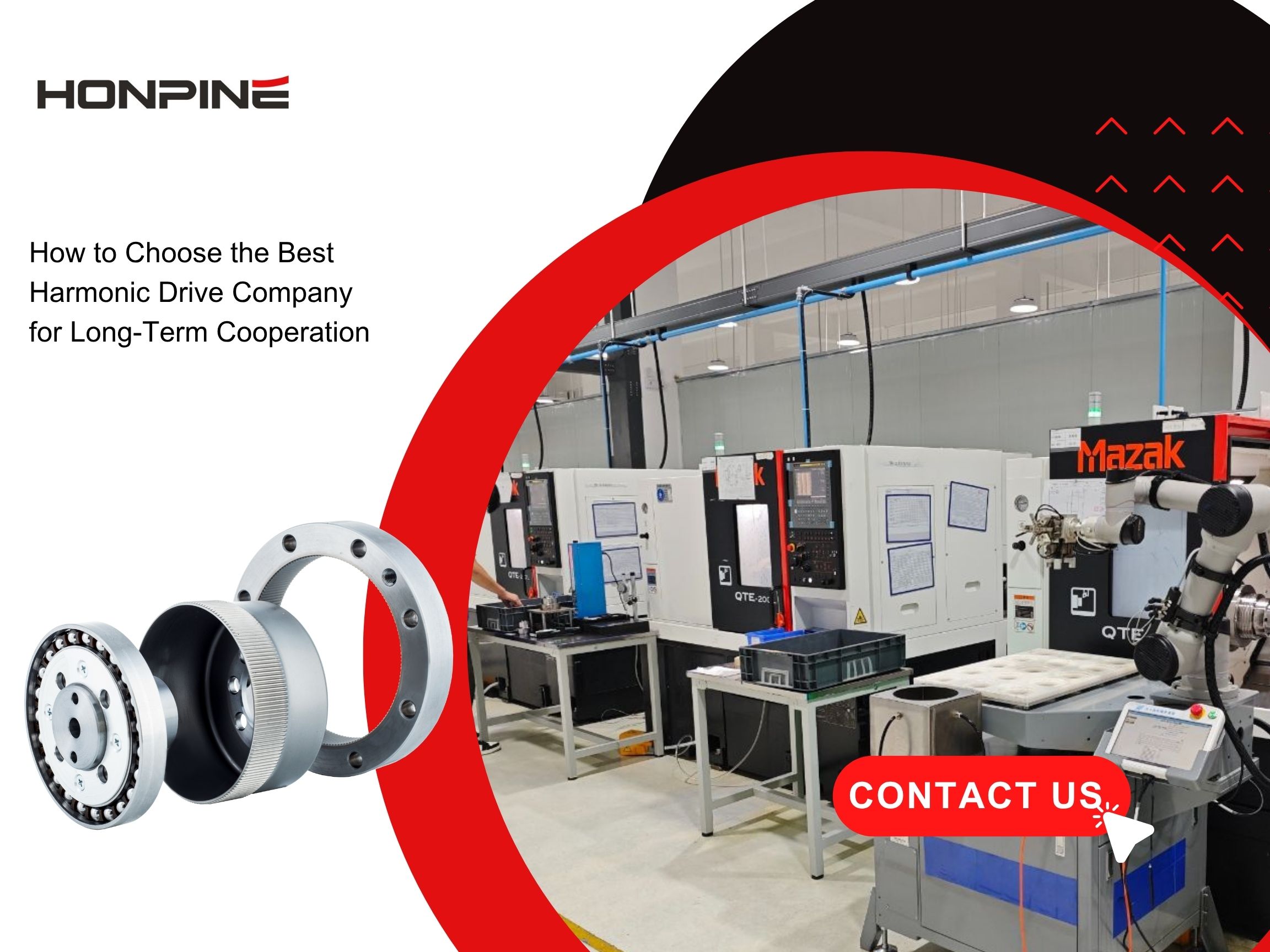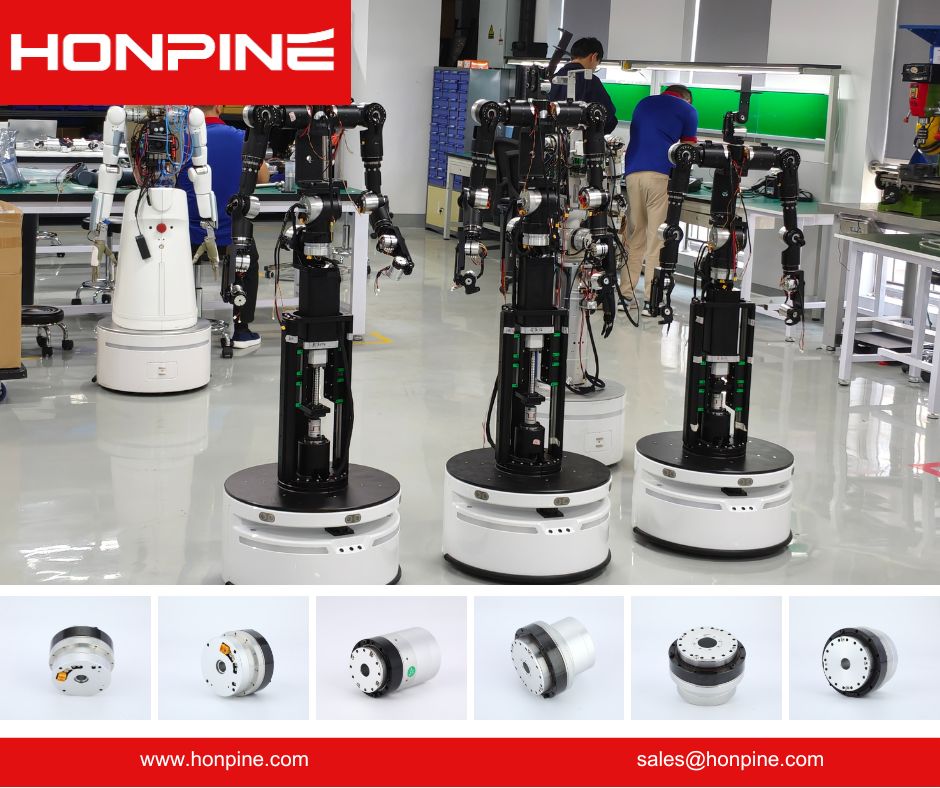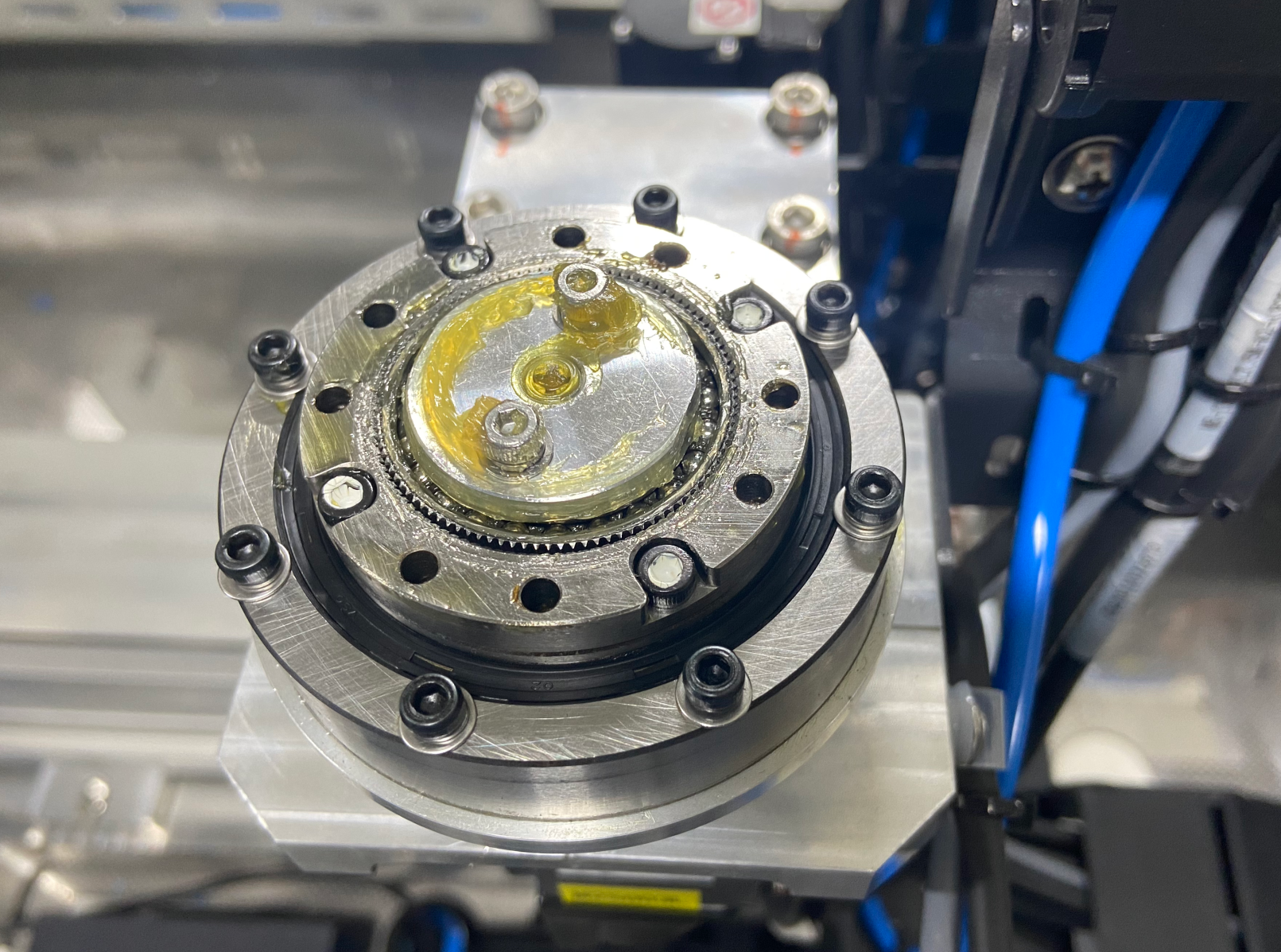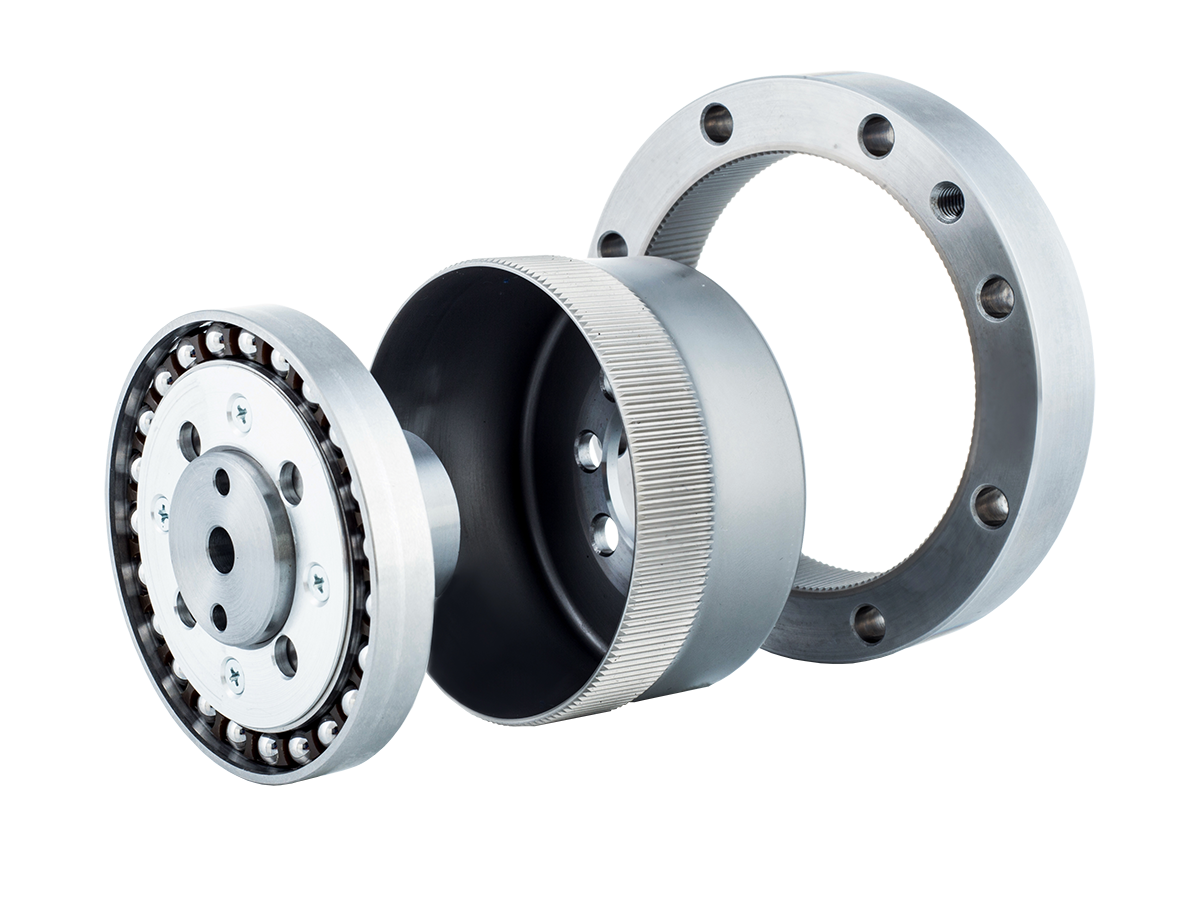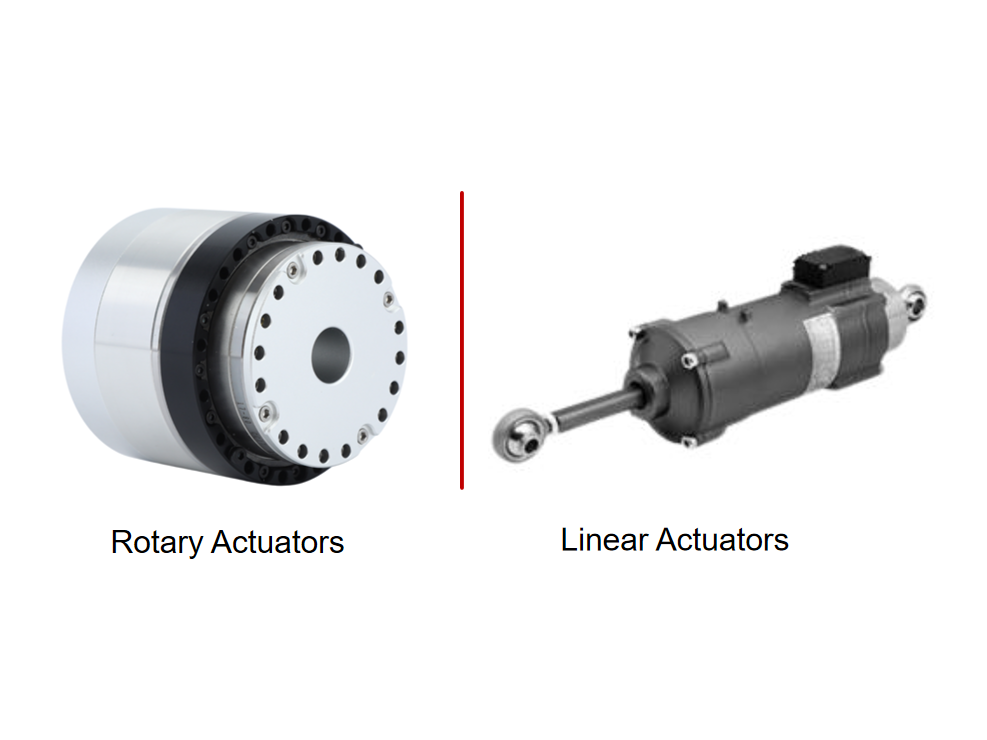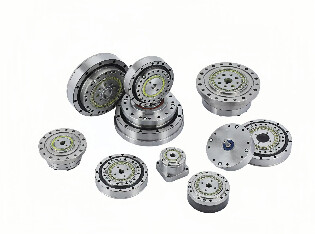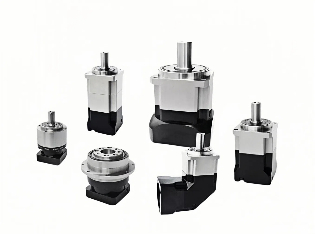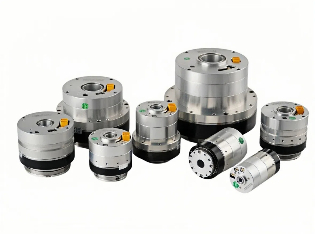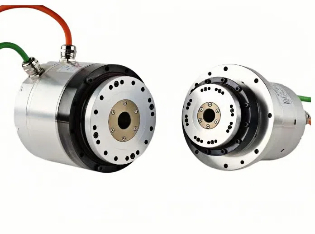RV Reducer Gearbox: The Core Technology Behind Industrial Robot Precision
Working principle and characteristics of RV reducer gearbox
The RV reducer gearbox is developed on the basis of traditional cycloid planetary transmission. Its reduction structure consists of the first-stage planetary reducer and the second-stage cycloid pinwheel reducer. It uses at least two eccentric shafts to connect the secondary reduction mechanism. The housing and cycloid pinwheel are matched and driven by solid castings and steel components, which form a closed differential gear train. The RV reducer gearbox not only overcomes the shortcomings of general cycloid pinwheel transmission but also has a series of advantages such as high precision (backlash less than 1 arc minute), high rigidity, high durability, high output density (high torque and compact), wide reduction ratio range, and low vibration.
The motion transmission process of the RV reducer gearbox is as follows: the rotation of the servo motor is transmitted to the planetary gear through the input gear, and the speed is reduced accordingly based on the gear ratio between the input gear and the planetary gear (first-stage reduction). The crankshaft is directly connected to the planetary gear and rotates at the same speed. The two cycloid gears are installed between the eccentric section of the crankshaft and the needle bearing. When the crankshaft rotates, the cycloid gear installed on the eccentric section also moves eccentrically around the input shaft. On the other hand, needle rollers (one more than the cycloid gear teeth) are evenly spaced inside the pin gear housing. When the crankshaft completes one rotation, the cycloid gear performs an eccentric motion while contacting the needle roller. At this time, the output planet carrier rotates one tooth in the direction opposite to the rotation of the crankshaft. This rotation is output to the shaft of the second reduction unit (second-stage reduction). The total reduction ratio is the product of the reduction ratios of the first and second stages.
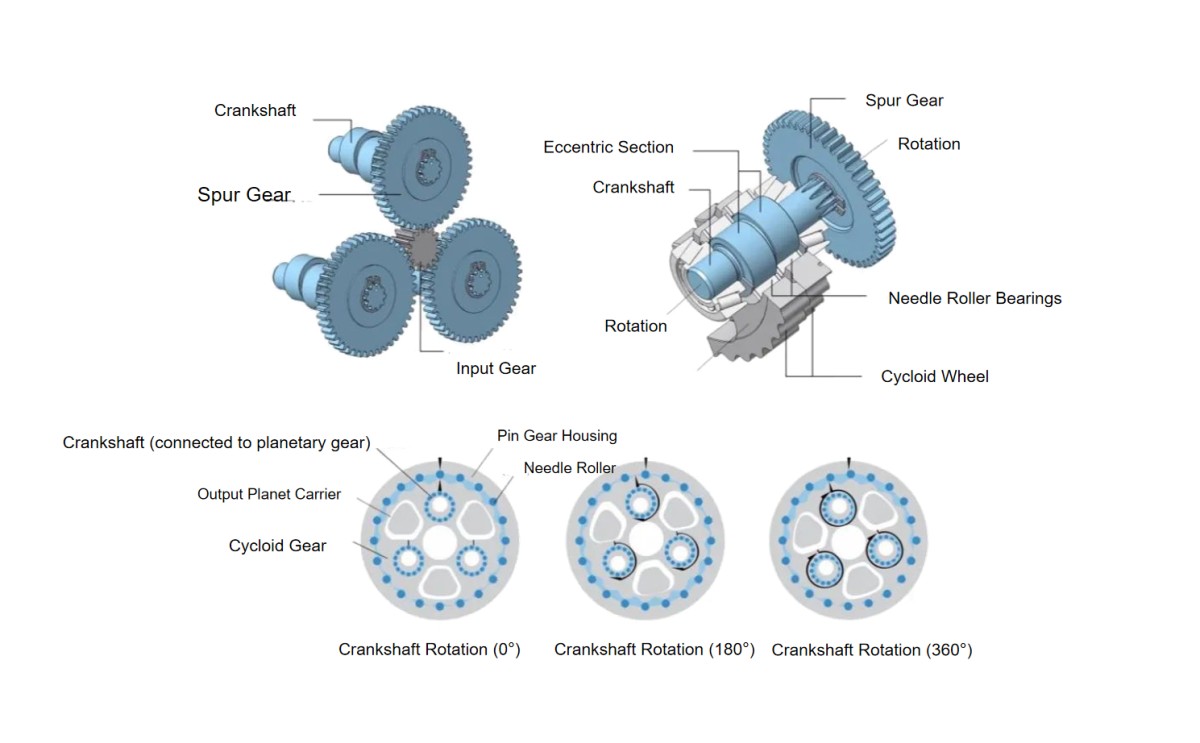
RV reducer gearbox is the core component of industrial robots
RV and harmonic reducers are core components of high-end equipment manufacturing industries such as industrial robots. As the focus of global industrial competition and the driving force of China's industrial upgrading, the rapid development of industrial robots provides a broad market space and an important driving force for the development of the RV reducer gearbox industry. As the core component of industrial robots, the RV reducer gearbox, on the one hand, benefits from the growing demand for industrial robots, which provides continuous development momentum. On the other hand, the working life of industrial robots is generally 8–10 years. During this period, the reducer, as a transmission and load-bearing component, is subject to inevitable wear. Its service life is typically about two years. The aftermarket demand for replacements is also one of the key demand drivers. Therefore, the current maintenance of industrial robots requires a large number of reducers to be replaced, which also constitutes the market space for RV reducer gearbox.
Classification of HONPINE RV reducer gearbox
HONPINE RV reducer gearbox are divided into standard RV reducer gearbox and RV reducer gearbox. The standard RV reducer gearbox is a reduction device designed for precision machinery. It is a two-stage closed differential gear train structure composed of a cycloidal pinwheel and a planetary gear. It is an open structure and requires flange sealing and filling with special RV grease when used. In the field of industrial robots, for robot arms with end loads under 20 kg, RV reducer gearboxes are mainly used in the base to large-load joints (typically the 1st to 4th joints). For robot arms with end loads exceeding 20 kg, all six corresponding joint degrees of freedom use RV reducer gearbox. RV reducer gearboxes are the core transmission components ensuring the positioning accuracy of the robot arm.
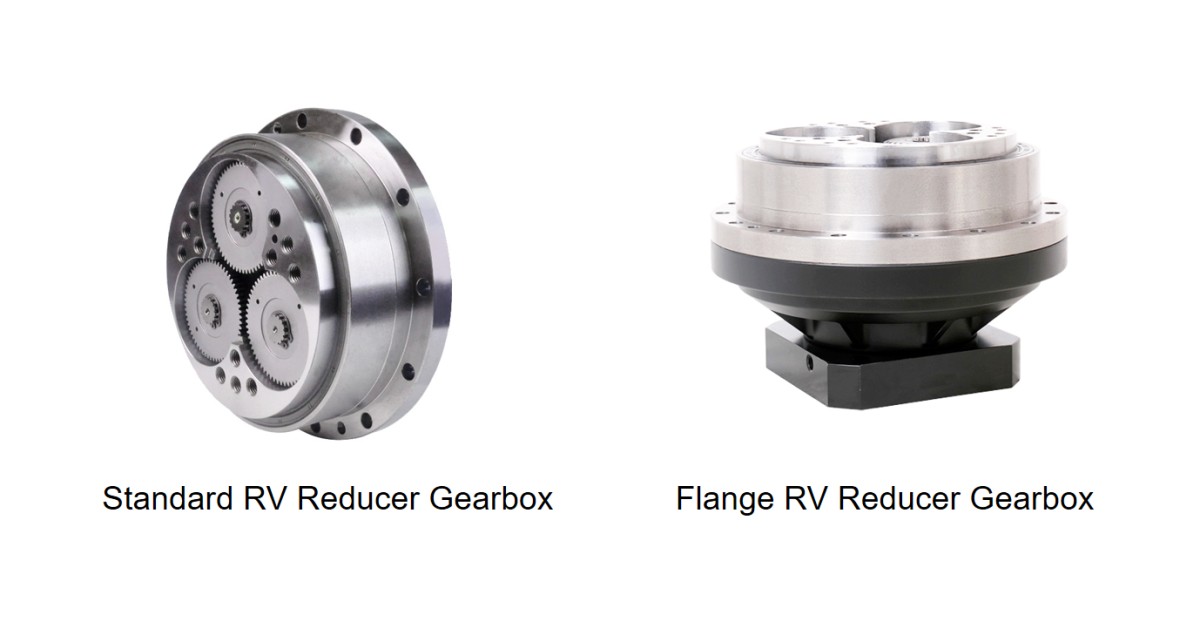
The standard RV reducer gearbox can be divided into the solid-structure Standard E Series and the hollow-structure Standard C Series based on its design.
Brief instructions for use: The Standard E Series and Standard C Series are open structures without flange sealing. Customers need to perform flange sealing and inject special RV lubricating grease after purchase. The factory’s solid input shaft must be re-drilled and slotted according to the customer's motor input shaft specifications (our company can process it based on the customer’s provided input shaft drawings).
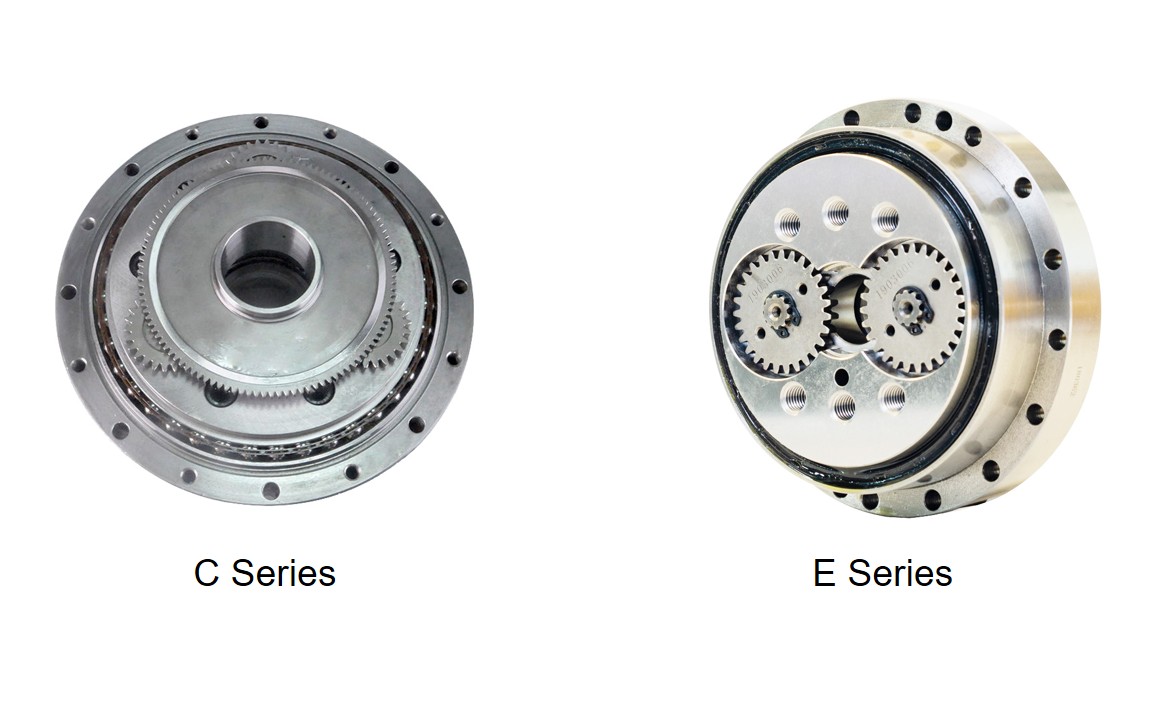
The flange-integrated RV reducer gearbox is a customized model based on the standard RV reducer gearbox with pre-installed flange sealing. According to the classification of the standard RV reducer gearbox, it can also be divided into the solid-structure Flange-Integrated E Series and the hollow-structure Flange-Integrated C Series.
Development and future of RV reducer gearboxes
RV reducer gearbox, as key components of high-end equipment such as robots and CNC machine tools, are indispensable in industrial automation and intelligence. They hold great significance for the transformation and upgrading of the manufacturing industry. They help promote the intelligent transformation of manufacturing, deepen the integration of industrialization and informatization, improve industrial automation levels, and drive the rapid development of industrial robots.
Why choose HONPINE RV reducer gearbox?
The key technical indicators of industrial robot RV reducer gearbox mainly include torsional stiffness, starting torque, transmission accuracy, idle travel, backlash, transmission error, transmission efficiency, and noise. The design, R&D, and manufacturing of RV reducer gearboxes require repeated testing and adjustments of materials, component structures, and gear tooth profiles. The precision requirements of RV reducer gearboxes mean their production involves high technical complexity. The main technical challenges include:
The two-stage reduction design, where small errors in the first stage are amplified at the output, affecting product accuracy.
The need to ensure large torque transmission, withstand overload shocks, and meet expected service life, leading to an over-constrained design. This imposes extremely high machining accuracy requirements and increases production difficulty.
Achieving stable, reliable, and consistent performance in mass production is particularly challenging.
HONPINE invests heavily in R&D design, quality control, product testing, and assembly verification. The manufacturing process imposes strict requirements on materials, production equipment, and process precision.
Double Click
Products Catelog
